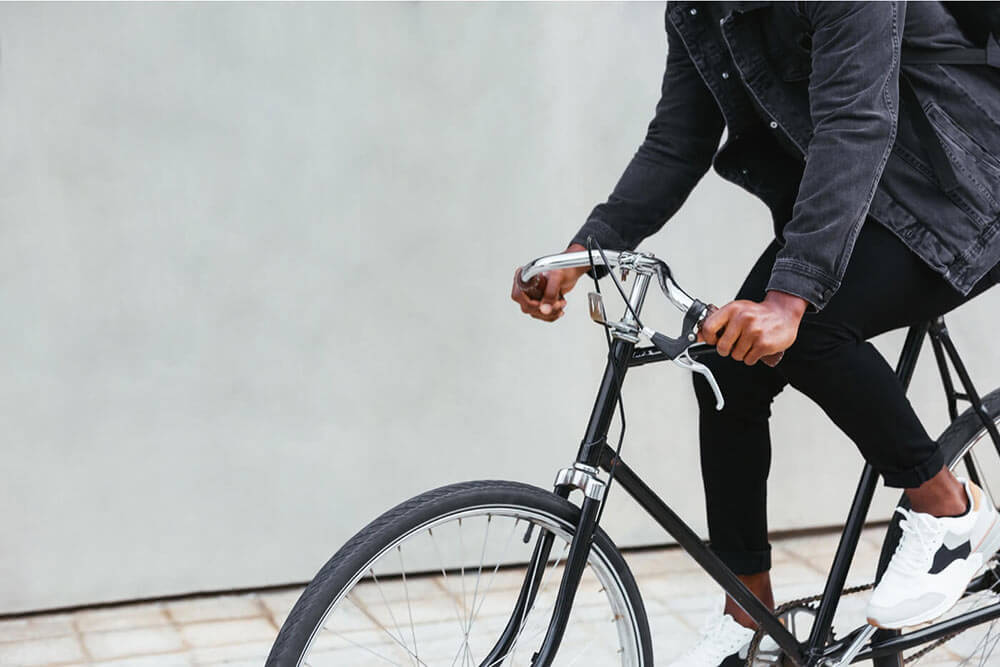
10 tips for sharing the road with bicycles:
- Think of bikes as cars – but with fewer safety features. A bicycle is considered a vehicle when it’s on the road. But with no seatbelts, no protective frame and no air bags, riding a bike is inherently more dangerous than driving a car. Because cyclists don’t have a vehicle to protect them if an accident happens, it’s your responsibility as a driver to recognize this and practice extra caution when sharing the roadway with bicycles.
- Recognize cycling hand signals. Every driver should know the universal signals cyclists use to communicate their next move with drivers and other road users.
- Pay special attention when stopping your car. Always check your mirrors and blind spots when parallel parking or pulling over, and never open your car door without looking for cyclists first. Getting doored is a nightmare for a rider, which is why many countries are now teaching the “Dutch Reach” method in driver’s ed classes. It’s a simple habit to pick up – instead of opening the door with your hand that’s closest to it, use the opposite hand to force your body to turn around and survey the situation behind you, including oncoming cyclists.
- Learn how to safely navigate intersections alongside cyclists. Because cyclists are more likely to be killed or injured in settings where there’s an intersection or traffic signals2, it’s very important to know how bicycles make their turns and how to keep your eyes open for cyclists when you’re making turns in intersections. Here’s what to look out for:
- If a cyclist is turning right. When a cyclist makes a right turn, they’ll proceed directly from the bike lane or the right side of the road. If you’re turning right at the same time, stay a safe distance away, or wait for them to turn first.
- If a cyclist is turning left. Cyclists are allowed to make a turn from the left-hand turning lane, if there is one. If not, they’re allowed to merge into the centre lane to make their turn. Treat left-turning riders as you would a left-turning vehicle by staying fully behind or in front of them, and not by pulling up alongside them.
- If you as a driver are turning right. Before turning right, check your mirrors and blind spot to avoid hitting an unsuspecting rider who’s continuing in a straight path.
- If you as a driver are turning left. Like the cyclist rule above, remember that the left-hand turning lane is shared. Watch out for cyclists ahead of and behind you.
- Obey bike sharrows. In many urban centres, shared roadways will have sharrows – two chevrons above a bike symbol – painted on the road, either in the middle of the lane or at an intersection. Sharrows are there to alert drivers that the road is shared. This means cyclists are allowed to use the full lane when it’s unsafe on their usual right side of the road – like when there’s a parked delivery vehicle, an open car door, or a dangerous pothole. Sharrows are also used to point cyclists in the right direction, like on one-way streets where bikes are permitted to ride in the opposite direction. So, it’s best to slow down and use extra caution when you see these on the street.
- Pass bicyclists only if it’s safe to do so. Drivers should maintain a minimum 3-foot distance when passing a cyclist, but it’s always safest to change lanes to pass if you can. Remember, in some provinces – like Ontario – you can be fined, and even add demerit points to your license, for passing a bicycle too closely.3
- Expect rush hour to be more dangerous.
Both the city and the suburbs have their own pros and cons , but no matter where you live, rush hour means busier roads. And statistically, most bicycle injuries and deaths occur during the afternoon rush hour, with darkness and blinding sunlight playing a part in reducing visibility4. Be sure to reduce your speed and be prepared for cyclists to appear unexpectedly during hours of peak congestion. - Watch for cyclists who aren’t following the rules. Just as drivers are expected to follow a set of rules, so are cyclists – but just like drivers, sometimes they don’t. Stay alert for riders who are cycling against traffic, wearing headphones, or aren’t using bike lights at night. Even if they’re breaking the rules of the road, practicing good judgment yourself will help prevent accidents.
- Be extra careful around child cyclists. Eventually, kids will transition from riding on the sidewalk to riding on the road. But, they might still be a little wobbly and weave a little more than a grownup would. Be prudent by slowing down and giving an extra-wide berth when you see a child cyclist on the road.
- Don’t drive distracted. Statistics show that a driver who's texting is 23 times more likely to get into an accident than a driver who isn’t5. Distracted driving is dangerous and illegal, and if you’re not paying attention to your surroundings, you’re at risk of hitting a cyclist. Not only will a distracted driving ticket impact your driving record,
it could also affect your insurance . Just don’t do it.
As a driver, it’s always in your best interest to